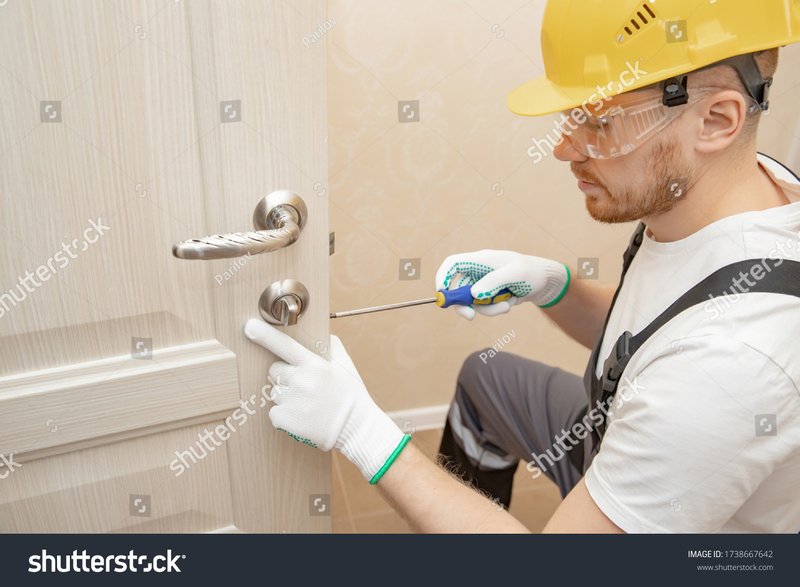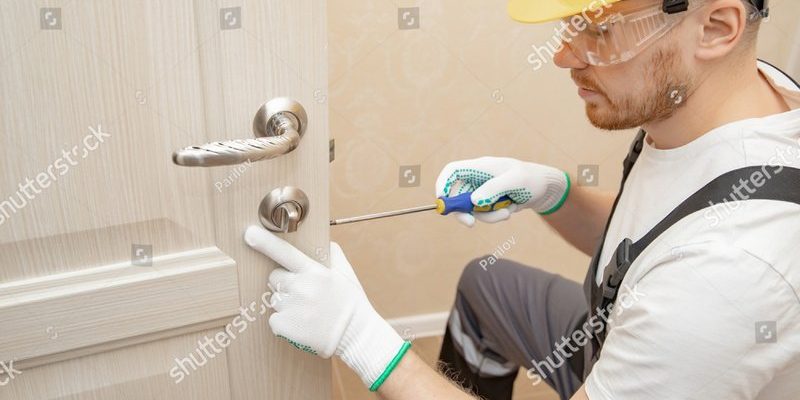
Whether it’s an ornate brass knob that’s seen better days or a rusty old hinge that’s beginning to buckle, working with vintage door hardware can be a rewarding experience. However, you might be wondering how to tackle repairs or restorations without losing their original beauty. Let’s dig in and discover the best tips to help you preserve and maintain them effectively.
Assessing The Condition Of Your Door Hardware
Before diving into any repairs, it’s essential to evaluate the condition of your door hardware. Look closely at the surfaces and mechanics. Are there visible signs of rust or wear? Is the knob loose or the latch sticking? Understanding what you’re working with will guide your next steps.
Start by checking for rust. If the hardware has a lot of it, a simple scrub might not suffice. You may need to use a rust remover. If the hardware feels wobbly, it might be loose screws or damaged parts that need replacing. Mark down any noticeable issues; this will help you prioritize what needs immediate attention.
Also, don’t forget to consider how the hardware interacts with the door itself. A beautiful, vintage knob might look stunning, but if it doesn’t line up with the latch properly, it’s not much good. Always keep the door’s condition in mind, too.
Cleaning Old Hardware Safely
Cleaning is often the first step in restoring old hardware, but you want to be cautious. Harsh chemicals can strip away the finish and ruin the beauty of antique pieces. Use warm, soapy water and a soft cloth to wipe down the hardware gently. This usually does the trick without causing damage.
For tougher spots or rust, consider a mix of vinegar and baking soda. This natural remedy is not only gentle but effective. Apply it with a soft toothbrush to scrub away grime without scratching the surface. After cleaning, make sure you rinse and dry the hardware thoroughly to prevent moisture-related issues.
If you notice any paint or residue stickiness, a little mineral spirits on a cloth can help remove that without causing harm. Just remember to test any cleaning solution on a small, hidden area first. You want to avoid any drastic changes that could affect the overall aesthetic.
Repairing vs. Replacing: What To Choose?
It’s a common dilemma: should you repair old hardware, or is it better to replace it? This decision largely depends on the condition and rarity of the piece. If you’re dealing with a unique or rare item, preservation is usually the goal.
For simple repairs, like tightening a loose screw or replacing a spring in a latch, it’s usually best to stick with repairs. Just think about how satisfying it is to give something old a new lease on life! However, if a piece is severely damaged or irreparable, it might be time to look for a replacement.
When replacing, try to find hardware that closely resembles the original. This way, you maintain the character of your door. There are also many reproductions available today that can mimic the look of the old while providing modern functionality.
Understanding DIY Installation and Removal
If you’ve decided to tackle the installation or removal of your old door hardware, take your time. Start with the right tools. You’ll need a screwdriver, a soft cloth, and possibly some lubricating oil. Here’s a simple step-by-step process:
- Remove the old hardware gently. If it’s stuck, don’t force it. Apply some penetrating oil and wait a bit.
- Clean the area where the new hardware will go. Dust and debris can prevent a good fit.
- Install the new hardware, ensuring everything lines up perfectly. Screw it in without overtightening, as this could crack the wood.
If you’re replacing the hardware, make sure everything fits before you secure it completely. A little adjustment can go a long way in ensuring a smooth operation.
Using Lubrication for Smooth Operation
Old door hardware can often benefit from some TLC in the form of lubrication. This is especially true for hinges and locks. A bit of oil can make a world of difference, helping them operate quietly and smoothly.
For best results, use a lightweight lubricant like a silicone spray or a dedicated door lubricant. Avoid using grease or heavy oils, as these can attract dust and grime over time. Simply spray or apply a small amount to the moving parts, and then work them back and forth a few times to distribute the oil evenly.
You might be surprised at how much smoother the operation becomes. Regular lubrication can extend the life of your hardware, keeping it functional for years to come.
When to Call a Professional
Sometimes, despite your best efforts, you might find that the hardware is too fragile or complex to handle alone. Maybe it’s an intricate mechanism, or perhaps you’re worried about damaging it further. That’s when it’s time to consider professional help.
An experienced locksmith or restoration expert can provide specialized care. They have the skills and tools needed to handle delicate or complex repairs that might be outside your comfort zone. If your hardware is particularly valuable or holds significant sentimental value, investing in a pro can give you peace of mind.
Additionally, if you’re unsure about what to do next, consulting an expert can save you time and prevent costly mistakes. It’s always okay to ask for help when you need it!
Long-Term Care Tips for Old Door Hardware
Maintaining old door hardware is all about consistency. Regular checks can help you catch issues before they become bigger problems. Here are some quick tips:
- Regular Cleaning: Dusting and occasional deep cleaning can keep hardware looking great.
- Lubrication: A quick spray of lubricant once or twice a year can keep things moving smoothly.
- Monitor for Damage: Check screws and latches periodically to tighten or replace as needed.
Establishing a simple routine can prevent long-term deterioration and help your hardware stand the test of time. Think of it as a little love you give to a piece of history.
In conclusion, working with old or fragile door hardware can feel intimidating, but with the right approach and care, it can be a rewarding project. By assessing the condition, cleaning gently, and knowing when to repair or replace, you can preserve the charm these pieces bring to your home. Remember, it’s all about patience and a little bit of TLC. Happy restoring!
